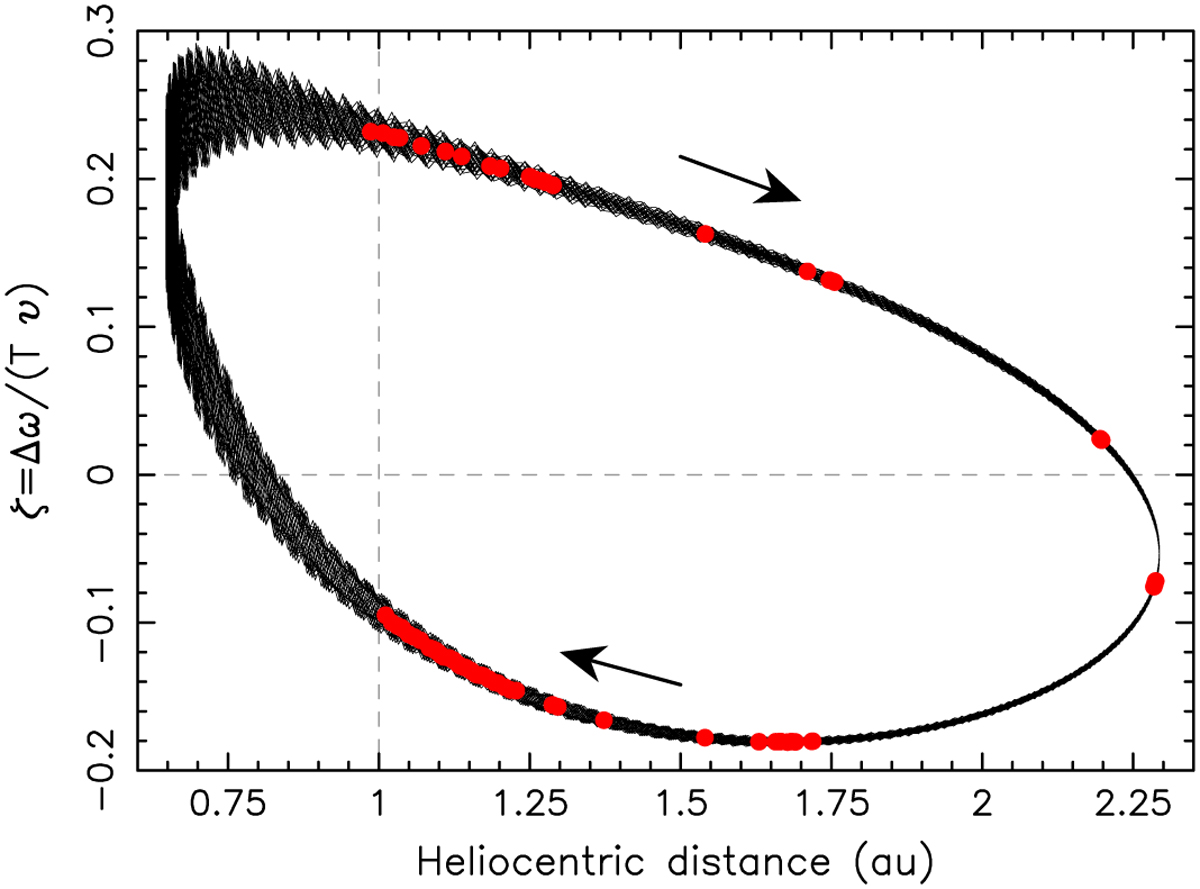Fig. 22

Download original image
Nondimensional factor ζ (on the ordinate) related to the periodic part of the rotation frequency change ∆ω (see the text), expressed as a function of the heliocentric distance (at the abscissa). The sense of motion is clarified by the arrows, which imply that the upper branch of the curve corresponds to the motion from perihelion to aphelion, and vice versa for the lower branch of the curve. This prediction corresponds to the specific case of (1862) Apollo; the secular part with the υ value determined in Sect. 2.1 has been subtracted from the rotation-rate ω(t) evolution and used for the normalization of the ζ function. The high eccentricity (⋍ 0.56) of the Apollo orbit implies that the amplitude of the effect is not too small. The red symbols indicate the epochs along the orbits for which light-curve observations are available. Some of the observations were taken during close encounters on extreme values of phase angle exceeding 90° at heliocentric distances smaller than 1 au (indicated by the vertical dashed line). However, Apollo is large enough to also be easily observable near the aphelion of its orbit at a heliocentric distance of 2.29 au (see also Table A.2).
Current usage metrics show cumulative count of Article Views (full-text article views including HTML views, PDF and ePub downloads, according to the available data) and Abstracts Views on Vision4Press platform.
Data correspond to usage on the plateform after 2015. The current usage metrics is available 48-96 hours after online publication and is updated daily on week days.
Initial download of the metrics may take a while.


